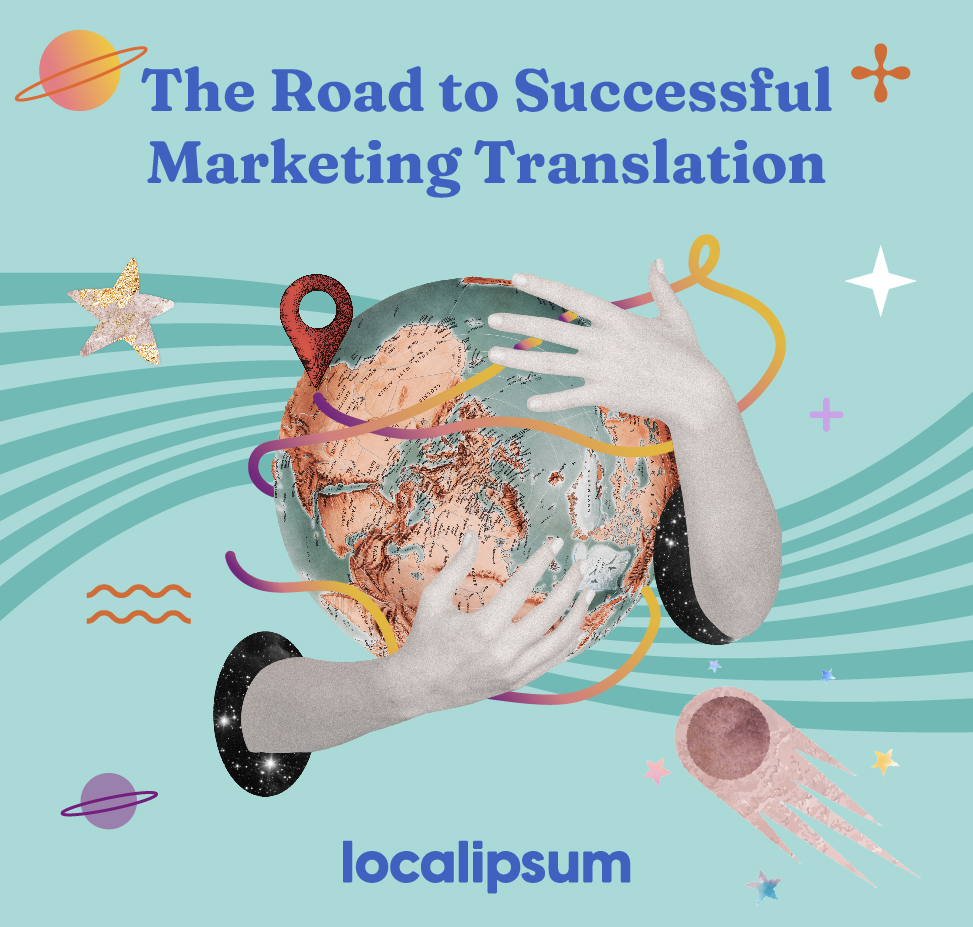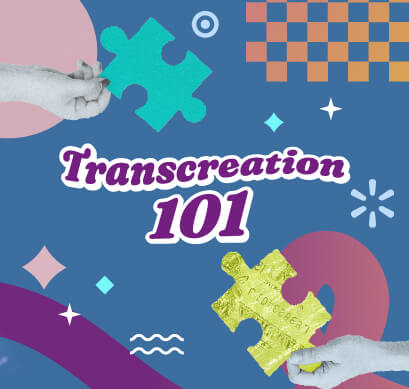Strategies for Effective Marketing Translation - Localipsum
As you navigate the intricate terrain of global markets, you’ll find that ensuring your brand’s voice echoes across markets will truly foster a global presence. Marketing translation goes beyond mere language conversion; it’s quite an art that may even be considered ‘The Eighth Art’! Join us as we delve into this universe and explore strategies to bridge the gap between languages and cultures while staying true to your brand’s identity.
Table of Contents
Decoding Marketing Translation
Why is it Important?
Let’s turn this article into our very own mini focus group: think of any ‘big brand’… Yep, that one will probably do. Think of its slogan, its most popular advertising campaigns, its graphics, and its aesthetics. Even though you may have envisioned the same company as a fellow reader, depending on where you are from, your answers may vary – widely.
Effective marketing translation is responsible for this magic. It fosters trust and credibility in foreign markets, nurturing enduring relationships with consumers worldwide. It’s the conduit to heighten brand recognition, increase customer engagement, and ultimately, amplify revenue.
Benefits of Marketing Translation
In the global business landscape, proficient marketing translation has a sort of dual force: substantial financial growth and the preservation of cultural relevance. As companies extend their reach into diverse markets, these advantages unfold almost simultaneously.
On the financial front, strategic translation catalyzes tangible business success. It propels increased market reach by effectively breaking language barriers, allowing companies to tap into previously unexplored customer bases. Furthermore, it elevates brand visibility. This, coupled with an emphasis on culturally adaptive messaging, leads to larger customer engagement and financial gains.
At the same time – like the other side of the gold coin – the strategic translation approach acts as a cultural compass, ensuring that messaging is nuanced, culturally sensitive, and relevant. It avoids inadvertent cultural insensitivity and preserves the traditions and values embedded in the brand. This meticulous attention to cultural relevance builds trust and credibility in foreign markets.
How is Marketing Translation Different?
What distinguishes marketing translation is its approach to conveying brand identity, tone, and style, going beyond the scope of general linguistic translation. This process is intricately intertwined with two vital components: Localization and Transcreation.
In a Kafkanian sense, we like to think of Transcreation as a creative metamorphosis. This process involves the reinterpretation of content to evoke the same emotional response in the target audience as the original message. This goes beyond linguistic accuracy and is most valuable when dealing with slogans, brand names, or marketing campaigns. We could keep on talking about Transcreation for hours… but if you know us, we’ve already done it. Check out our Transcreation guide for global brands to take a deeper dive.
Localization emphasizes the adaptation of content to suit the cultural and linguistic nuances of a specific target audience. It addresses elements such as currency, date formats, and even colloquial expressions that resonate more effectively with the local demographic. This ensures that the translated content not only speaks the language but also aligns seamlessly with the cultural context, making it more relatable and resonant.
Real-World Marketing Translation Examples
We can collectively say that a good marketing translation case slips under the radar of its target audience. Not because it lacks effectiveness. On the contrary: it’s so well integrated into the culture of the public that it does its work without calling out – bad – attention.
Some marketing translation examples aren’t attached to any specific brand: they respond to trends in the global market. This is the case of ‘Black Friday’, for example. In the US, this day is synonymous with excitement and anticipation, symbolizing significant sales and door-busting deals every Friday after Thanksgiving. However, the term takes on a vastly different connotation in Arabic-speaking countries, where the color black is associated with mourning and tragedy. This doesn’t quite set the mood for a shopping spree! Thus, the phenomenon is transformed into ‘White Friday’ in Middle Eastern countries, a strategic shift that maintains the essence of a major sale event while avoiding cultural missteps. Dear reader, I’m sure you’d agree that ChatGPT would never translate “black” as “white”. That’s where the human element can’t be beat… yet.


Do you remember Coca-Cola’s bottles with personal names? This successful advertising campaign centered around forging direct and personal connections. Even though you probably bought the bottle just to display on your shelf, it was an open invitation to “share a Coke”.
In China, addressing someone by their first name is considered less respectful. Coca-Cola ingeniously maneuvered through this challenge paving the way for genuine connections without compromising cultural respect. Instead, Coca-Cola introduced terms like “close friend” and “classmate” as substitutes for personal names. This subtle yet effective shift allowed the brand to maintain the essence of a direct and personal connection while respecting the cultural intricacies that govern interpersonal communication among the Chinese.
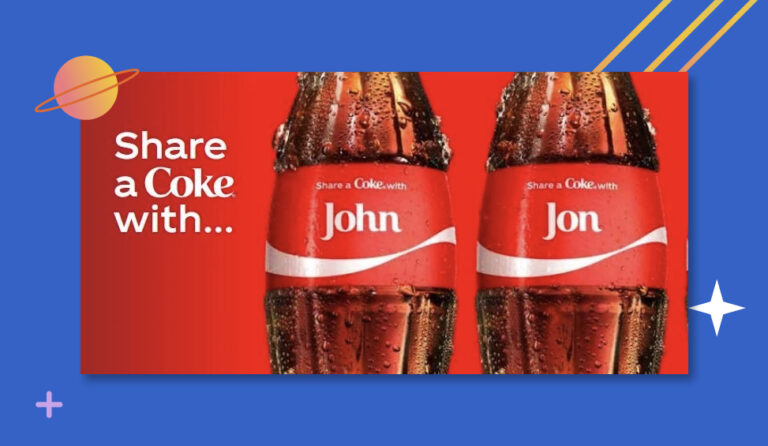
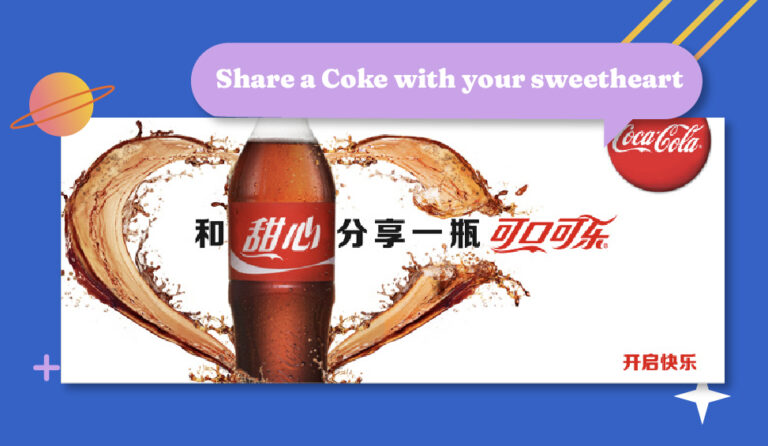
Marketing Translation Challenges
When committing to a marketing translation process, different variables come into play. Business plans, communication goals, cultural sensitivity, message effectiveness… quite a full plate. Let’s dive into different challenges that might need to be tackled.
Adaptability to the Locale’s Cultural Context
Navigating cultural contexts requires more than just linguistic proficiency. Apart from translators, involving cultural experts and market researchers is paramount. These specialists possess an intimate knowledge of the local culture, allowing them to guide the adaptation process.
Culturally Dependent Messages
Idioms, for example, are deeply rooted in cultural histories and pose quite a challenge. A literal translation may not capture the intended meaning, requiring a nuanced approach to convey the essence accurately. Understanding these subtleties is crucial to crafting messaging that feels native to the local audience.
Slogans Are Tricky to Translate
Slogans are the essence of brand identity. Translating them demands finesse to retain the emotional impact and resonance in the target language. For example, Coca-Cola’s It’s the Real Thing revolutionized the marketing landscape during the late 1960s, by emphasizing authenticity as a key selling point. The slogan was a masterstroke in creating emotional resonance: choosing Coca-Cola wasn’t just about taste; it was about embracing a lifestyle, a sentiment that resonated with the whole world. To transmit this intention coherently, some adaptions needed to be done before communicating globally.
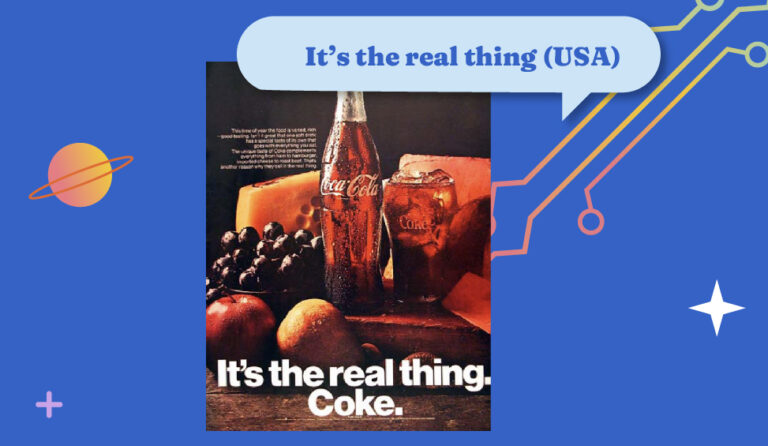
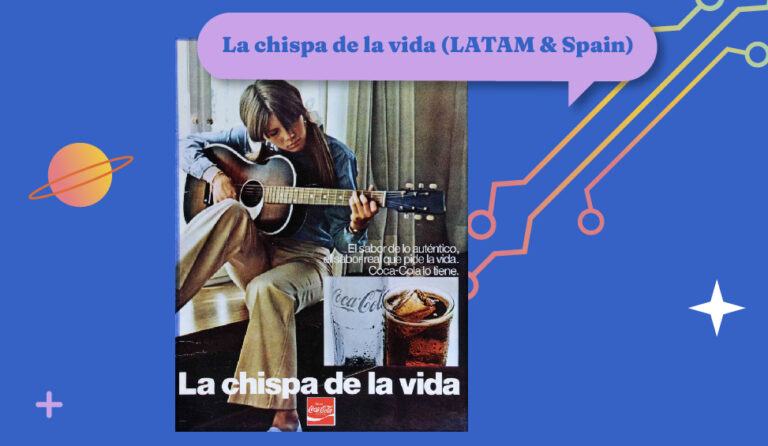
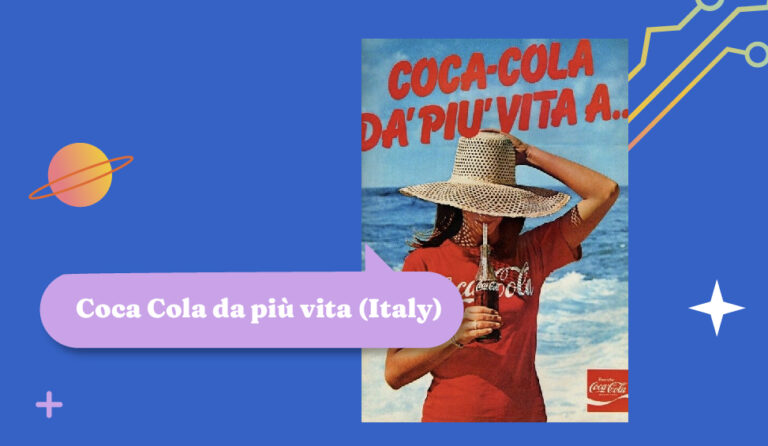
Marketing Translation Takes Time
Just like you wouldn’t rush a slogan creation in English, rushing the translation process jeopardizes quality and effectiveness. Marketing translation demands time for meticulous research, linguistic adaptation, and cultural assimilation. It also requires advanced thinking – hence the ipsum in our name, inviting clients to make (temporal) space for translation and community inclusion.
Limitations on Space
Some languages inherently require more space to convey the same message. Adapting to space constraints without compromising content is a delicate balancing act. This is quite common in the digital sphere, where Tech Localization comes in quite handy. If you want to check how length and space should always come together, we’ve published a pretty self-explanatory Instagram reel on the topic. Make our day and give us a follow! Our social media is a resource for enlightenment and entertainment. And the visuals are simply stunning… modestly speaking.
Establish the Right Tone and Style
Maintaining the brand’s tone and style is key. Striking the right balance ensures consistency and reinforces brand identity across diverse linguistic landscapes.
Maintain the Voice and Value of Your Brand
Preserving the unique voice and core values of a brand is non-negotiable. Successful marketing translation seamlessly integrates these elements, ensuring a cohesive brand narrative. For instance, Nike’s Just Do It underwent a full metamorphosis while communicating in Chinese markets. We’ve covered this amazing case in our Transcreation Masterguide. Check it out!
Consideration for Colors and Imagery
Colors and imagery carry a deep cultural significance. A successful translation considers graphic elements as a whole, avoiding inadvertent cultural insensitivity or misinterpretation.
Tips for Effective Marketing Translation
Like Rose in Titanic, it’s been 35 years… since we started working in the Translation industry (no icebergs in sight). At Localipsum, we’re like the old wizard in the hero’s journey and we’ve put together some final tips for going above and beyond with your marketing translation process. You’ve arrived at the juiciest part of the journey… consider it your reward for reading this far!
Know Your Resources
Understand the linguistic and cultural expertise within your team. Identify individuals with language proficiency and cultural insight, and be ready to outsource if necessary.
Versatile Translators and Writers
Seek language professionals who go beyond translation, possessing a vast understanding of marketing as well. They can ensure that translated content not only conveys the message but also aligns with your brand’s voice and objectives.
Enhance Team Efficiency
Streamline your workflow to enhance teamwork. Take advantage of project management tools and agile methodologies, establish clear communication channels, and define roles to ensure a collaborative and efficient translation process.
Maintain Consistency
Consistency is key in marketing translation. Keep a repository of past translations, style guides, a term base, and brand guidelines. This ensures uniformity in messaging, fostering a cohesive brand image across all languages.
Track Progress and Adapt
Flexibility and adaptability are crucial during a marketing translation’s workflow. Implement a system to track translation progress. Regularly assess the effectiveness of your strategy, and be ready to adapt based on feedback and performance metrics.
Make Strategic Decisions on Translation Scope
Clearly define the extent of your marketing translation efforts. Decide which materials require translation based on target audience demographics, market potential, and business goals. This targeted approach ensures efficient resource allocation.
Acknowledge Complexity
As you may imagine by now, marketing translation is a multifaceted process that shouldn’t be taken lightly. This involves conveying cultural nuances, adapting to diverse markets, and maintaining brand integrity. Acknowledge the complexity to approach translation with the necessary depth and expertise.
Integrate the Brand Seamlessly and Consider Cultural Adaptation
Ensure that translated materials seamlessly align with your brand identity. This involves not just linguistic accuracy but also capturing the tone, style, and essence of your brand across diverse languages, including visual elements, symbolism, and messaging that resonate with the cultural context, fostering a more profound connection with the audience.
Market Research and Feedback
Gather feedback by conducting thorough market research and engaging with local communities. Before communicating globally, you have to ensure your cultural approach so your marketing efforts are well-informed and fulfill its goals of expanding market reach.
Set a Budget Aside
Consider your needs and set funding aside – or apply for grants to make your dream come to fruition. Many organizations consider marketing translation as an afterthought. The process should be an integral part of your strategy and have funding allocated to it in advance. The amount of money dedicated to getting an English marketing strategy “right” is often multiple times above what is set aside for translation and adaptation into different languages. Just as you work and rework your English branding, the translation into other languages should be a goal from the get-go. Not many companies invest in focus groups beyond English; those that do have a clear understanding of what it entails to go the extra mile.
The Road to Successful Marketing Translation: Localipsum
As we’ve explored the challenges, strategies, and historical examples, it becomes evident that successful marketing translation is far more than a linguistic exercise – it’s a strategic investment in brand resonance and global impact.
At Localipsum, we don’t provide marketing translation as a mere service; we act like a guiding force through this intricate labyrinth. Organizations of all sizes not only trust us, but they even take the time to enrich our client testimonials page with their kind words. Check out what they have to say and see if any of their opinions resonate with you. We are ready when you are.
